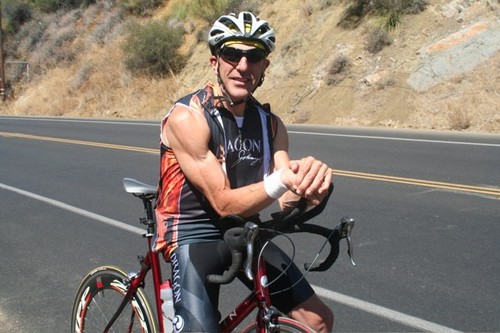
My coach, Jim Karanas, used to say that athletic performance triggers the ego. It brings forward conflict, discomfort, anxiety, self-defeating thoughts, and doubts about what”™s possible and what”™s not.
In athletics, you do what”™s necessary. You have the above thoughts without reacting to them — and stay with the event. The athletic objective is to learn to be nonreactive to distractions, including pain.
Giving up sugar can also bring forward discomforts — withdrawal symptoms, cravings — plus the anxiety, doubts, and self-defeating thoughts that may go with them. Like the athletic distractions, none of them is permanent.
You do what”™s necessary to eliminate them and stay with the plan.
One difference is that, in athletics, it helps not to derive an identity from your performance. That identity, my coach said, is just ego.
In contrast, I say, what”™s good about going through the process of quitting sugar is the sense of identity you develop when you do it. Your identity shifts.
You become The Person Who Doesn”™t Eat Sugar, and things change.
- You stop finding sugary foods tempting. They”™re Not Food.
- You consciously stop putting junk into your healthy body.
- People stop trying to persuade you to eat what you”™d rather avoid.
- People stop giving you gifts of tempting sugary treats.
It”™s not that the foods don”™t look or smell appetizing. But they don”™t bother us because we view them as something we simply don”™t eat.
They”™re no longer who we are.
Brain Chemistry Puts a Space Around Sugar
Eckhart Tolle, who wrote The Power of Now, talks about putting a space around pain, thoughts and memories — especially negative ones — by staying present in the moment.
Basically, that”™s becoming nonreactive.
Once addictive foods — like sugar — have been removed from your diet, the right foods you”™ve added along the way can, and will, enhance dopamine and improve your focus.
Meanwhile, serotonin will put a space around what”™s happening — and make you less reactive — by literally increasing the time between thought and action.
The non-reactivity holds true whether the trigger is external — seeing chocolate cake, smelling freshly baked cinnamon buns — or internal — having a taste that triggers the desire for lots more.
I talk to my clients about stability, which applies to both brain chemistry and glucose.
When both are stable and even, my clients are able to make decisions about food, instead of reacting to every treat.
They make decisions, instead of succumbing to junk they know won”™t do them good, just because they can”™t resist or think they have “decision-making fatigue.”
Once my clients are stable, I know they”™re on the ‘Zen path”™ — as described in my last post — to making clear decisions about food and sugar.
- New Year’s Resolutions: A Sugar Addict’s Survival Guide - April 15, 2024
- Motivation vs. Enthusiasm - October 12, 2023
- Why Exercise Shouldn’t Be Just One Thing - November 9, 2022

